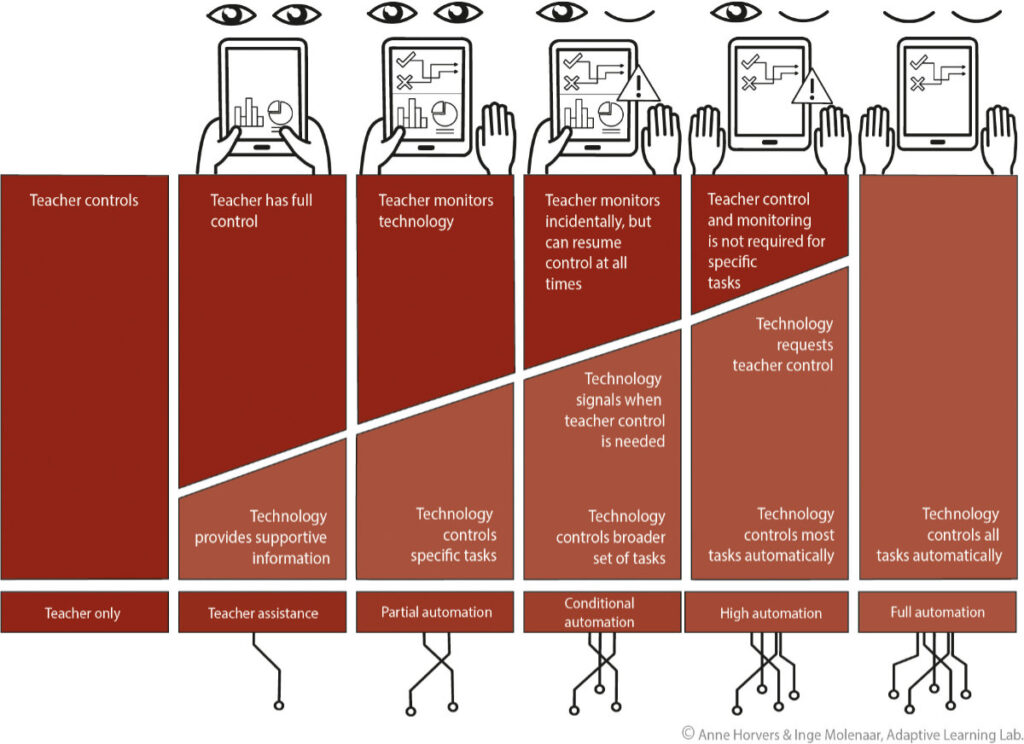


Personalized learning – that means learning that is geared towards the needs of the individual learner – is expected to increasingly replace traditional “industrial” learning, where all students receive the same instruction or tasks. Current technological developments can significantly support this personalized learning. As in other domains like self-driving cars or medical decision-making, there is a tendency towards hybrid human-AI solutions that combine the strengths of human and artificial intelligence in the best possible way.
To develop our thinking about the potential of learning analytics and AI in personalizing and enriching education, Inge Molenaar, professor of Education and Artificial Intelligence at learning at Radboud University, applies a model of 6 levels of automation defined by the car industry to the field of education. In this model, there is a transition from full teacher control over partial automation up to complete technology control. Even if full automation may not be appropriate for domains like medicine and education, the potential of AI lies in the ability to process big data sets and to detect, diagnose, and act. Instead of optimizing complete automation approaches, there is great potential in optimizing human AI solutions in these elements and therefore in other levels of partial automation.

In addition, while looking at the potential of state-of-the-art technology to enhance learning, she pleads to focus not only on students’ knowledge but also on learner characteristics like motivation, emotion, and self-regulated learning.
Molenaar, Inge: Personalisation of learning: Towards hybrid human-AI learning technologies. OECD (2021), OECD Digital Education Outlook 2021: Pushing the Frontiers with Artificial Intelligence, Blockchain and Robots, OECD Publishing, Paris, https://doi.org/10.1787/589b283f-en.
Molenaar, Inge (2022): Towards hybrid human-AI learning technologies. European Journal of Education (57)4, 632-645. https://doi.org/10.1111/ejed.12527.